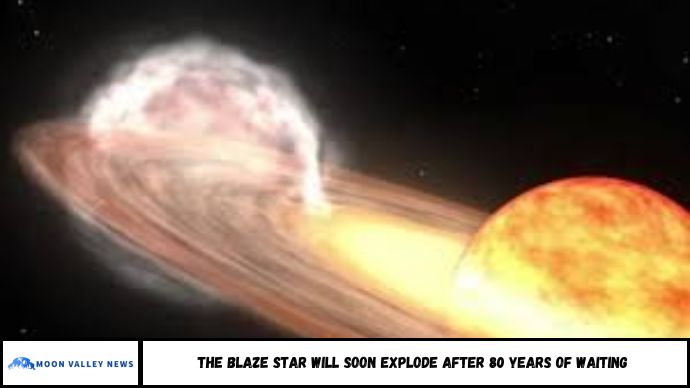For decades, astronomers have waited for the return of a spectacular cosmic phenomenon: the eruption of T Coronae Borealis, famously known as the Blaze Star. Last seen in 1946, this rare type of nova is expected to become visible to the naked eye very soon, lighting up the sky in a sudden burst of brilliance.
But what exactly is the Blaze Star? Why has it taken so long to erupt again? And how can you witness this once-in-a-lifetime event? In this article, we break down the science, timeline, and what to expect when this celestial giant finally explodes.
Get ready for a rare celestial show—**T Coronae Borealis, a recurrent nova famously called the Blaze Star, is expected to erupt in the night sky by late 2025, lighting up after nearly 80 years of silence since its last explosion in 1946.
This dramatic event will come from a binary star system that’s been building toward detonation. While astronomers can’t pinpoint the exact date, they warn that time is running out. The Blaze Star is showing all the signs of an imminent nova, and when it does explode, the burst will be visible to the naked eye from Earth—a cosmic light show decades in the making.
Abstract
The Blaze Star (T Coronae Borealis), a rare recurrent nova, is expected to explode again after 80 years of dormancy. This unique stellar event offers a rare chance to see a star suddenly brighten to visible magnitude, even with the naked eye. This article covers the science behind its eruption, when and where to see it, and what makes this nova so special in astronomical history.
What Is the Blaze Star?
T Coronae Borealis, also called the Blaze Star, is a binary star system located about 3,000 light-years from Earth in the constellation Corona Borealis. It consists of:
- A white dwarf, a dense stellar remnant
- A red giant, a dying star shedding material
Over time, the white dwarf pulls hydrogen-rich gas from its companion until pressure builds up, triggering a thermonuclear explosion on its surface. This creates a nova—a sudden, dramatic increase in brightness.
Why It Took 80 Years to Return
The Blaze Star is one of only 10 known recurrent novae in the Milky Way. These systems erupt on a cycle, but not like clockwork. T Coronae Borealis last exploded in 1946 and is predicted to erupt again around mid to late 2025.
Scientists have been closely monitoring several signs that point to an imminent eruption:
- Temperature fluctuations in the red giant
- Sudden dips in brightness (a common pre-eruption trait)
- Increasing x-ray and ultraviolet emissions
Astronomers believe these signals strongly suggest the star is nearing its explosive phase.
What Will the Eruption Look Like?
Once the Blaze Star erupts, it will:
- Suddenly brighten from magnitude +10 to about +2
- Be visible to the naked eye in dark-sky locations
- Remain visible for about a week, slowly fading back to obscurity
This isn’t a supernova (which destroys a star), but a nova—meaning the star will survive and could erupt again in another few decades.
When and Where to See the Blaze Star
- Expected Timeframe: Mid to late 2025
- Location: Constellation Corona Borealis, in the northern hemisphere
- Best Viewing Conditions:
- Away from city lights
- On clear, dark nights
- Using stargazing apps or binoculars (optional but helpful)
The Blaze Star will appear between the constellations Bootes and Hercules, forming a distinctive arc known as the Northern Crown.
Why This Event Matters
This isn’t just another stargazing moment—it’s a rare opportunity to witness:
- Stellar evolution in real time
- A live nova explosion from Earth
- A key phenomenon helping astronomers study binary systems, white dwarfs, and galactic chemistry
FAQs
1. What is the Blaze Star?
It’s a recurrent nova system (T Coronae Borealis) expected to explode soon.
2. Can I see the eruption with the naked eye?
Yes! It will reach magnitude +2, bright enough to see without a telescope.
3. When will the Blaze Star erupt?
Predicted between mid and late 2025, though the exact date isn’t confirmed.
4. Is this the same as a supernova?
No. A nova doesn’t destroy the star, while a supernova does.
5. Where is the Blaze Star located?
In the Corona Borealis constellation, visible in the northern hemisphere.
6. How long will it stay visible?
About one week, gradually fading after the peak explosion.
Conclusion
The Blaze Star’s eruption will be one of the most spectacular astronomical events of the decade. For most of us, this is a once-in-a-lifetime chance to witness a nova explosion without special equipment. Whether you’re a professional astronomer or a casual sky-watcher, this brilliant burst of light in the Northern Crown promises to be unforgettable.







